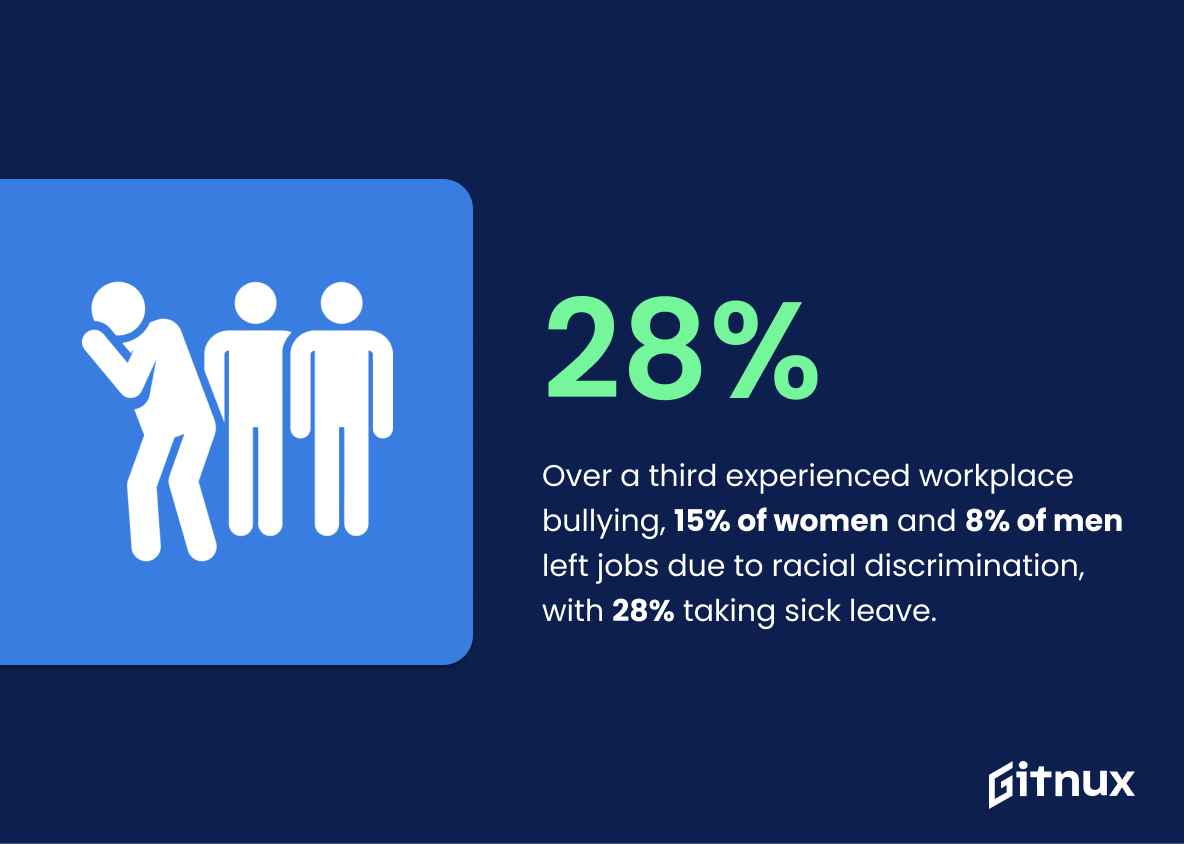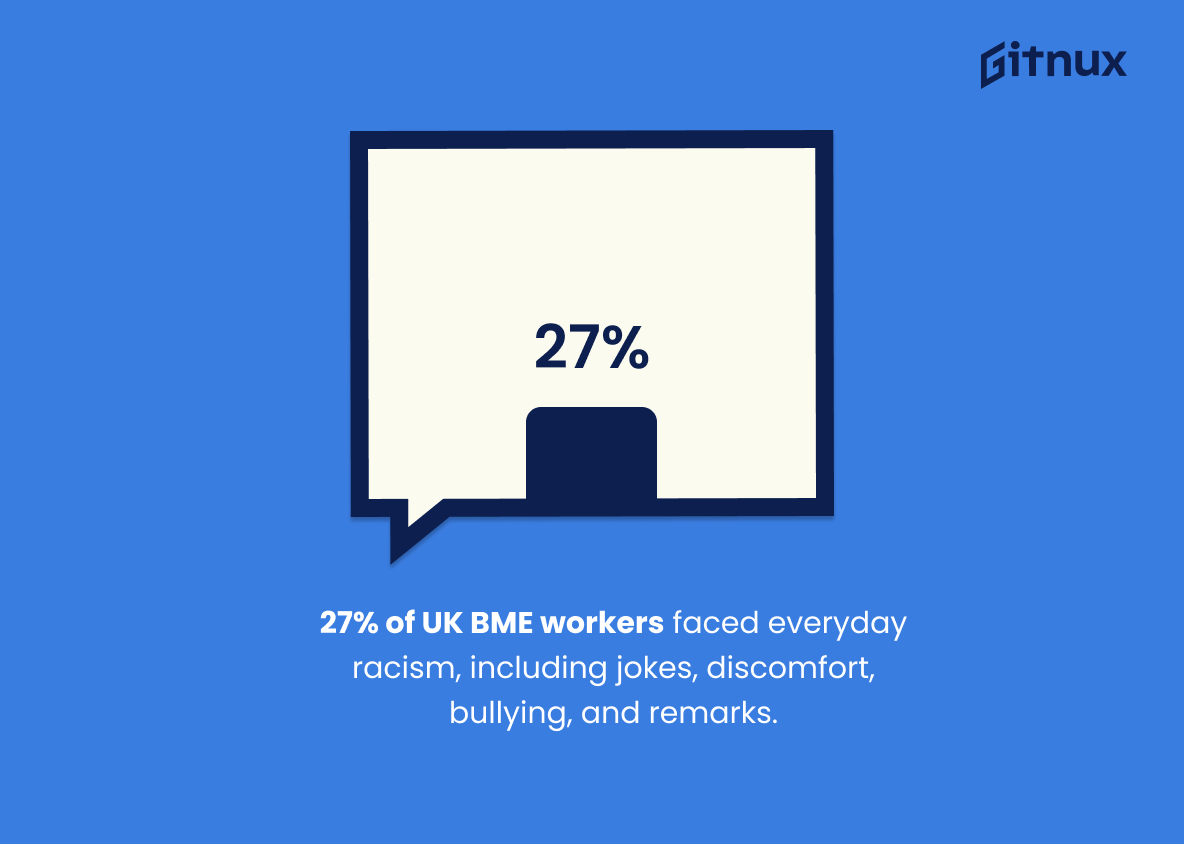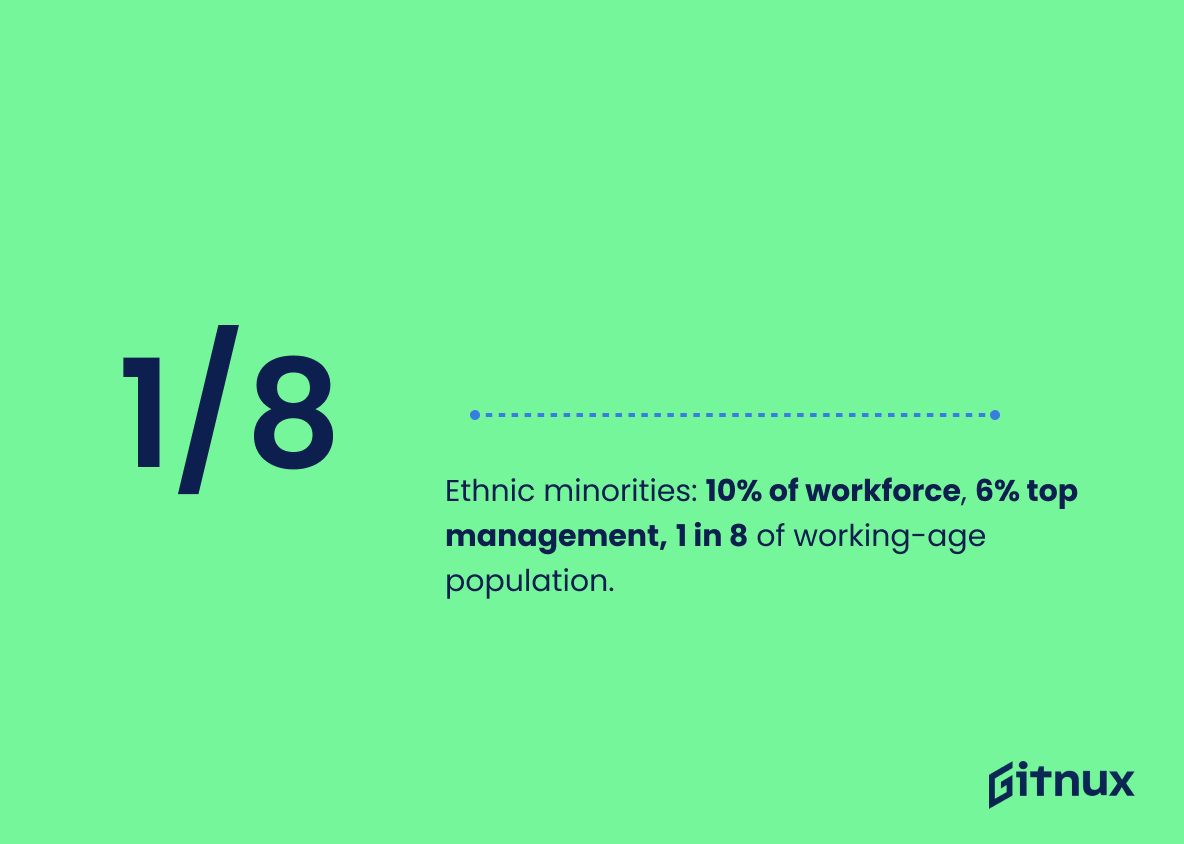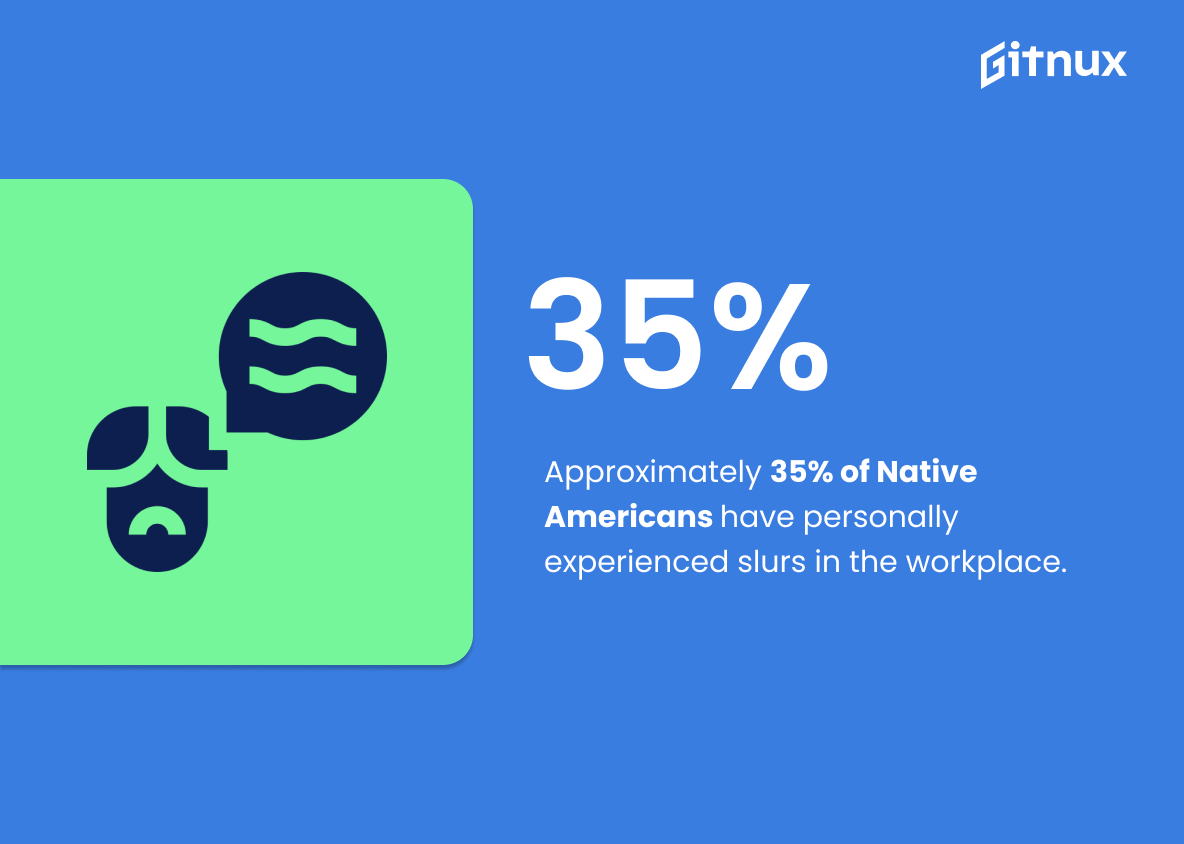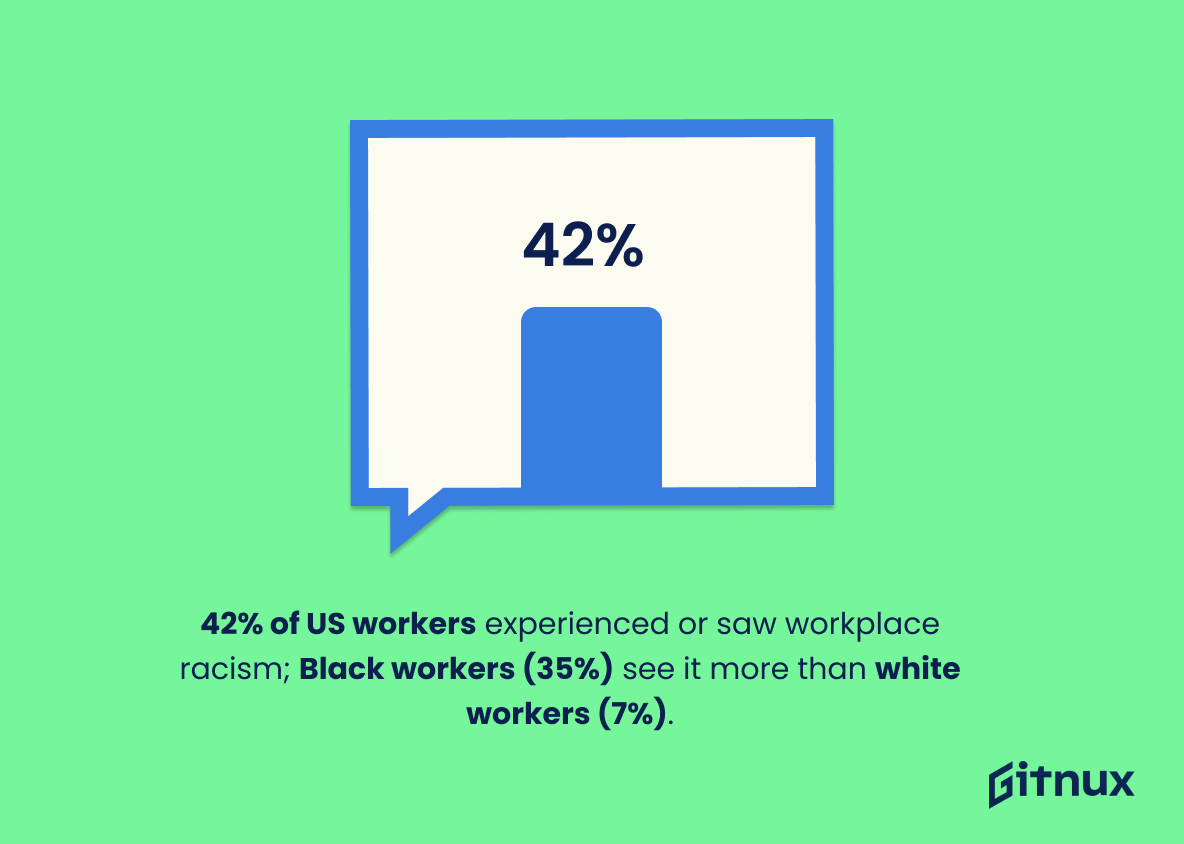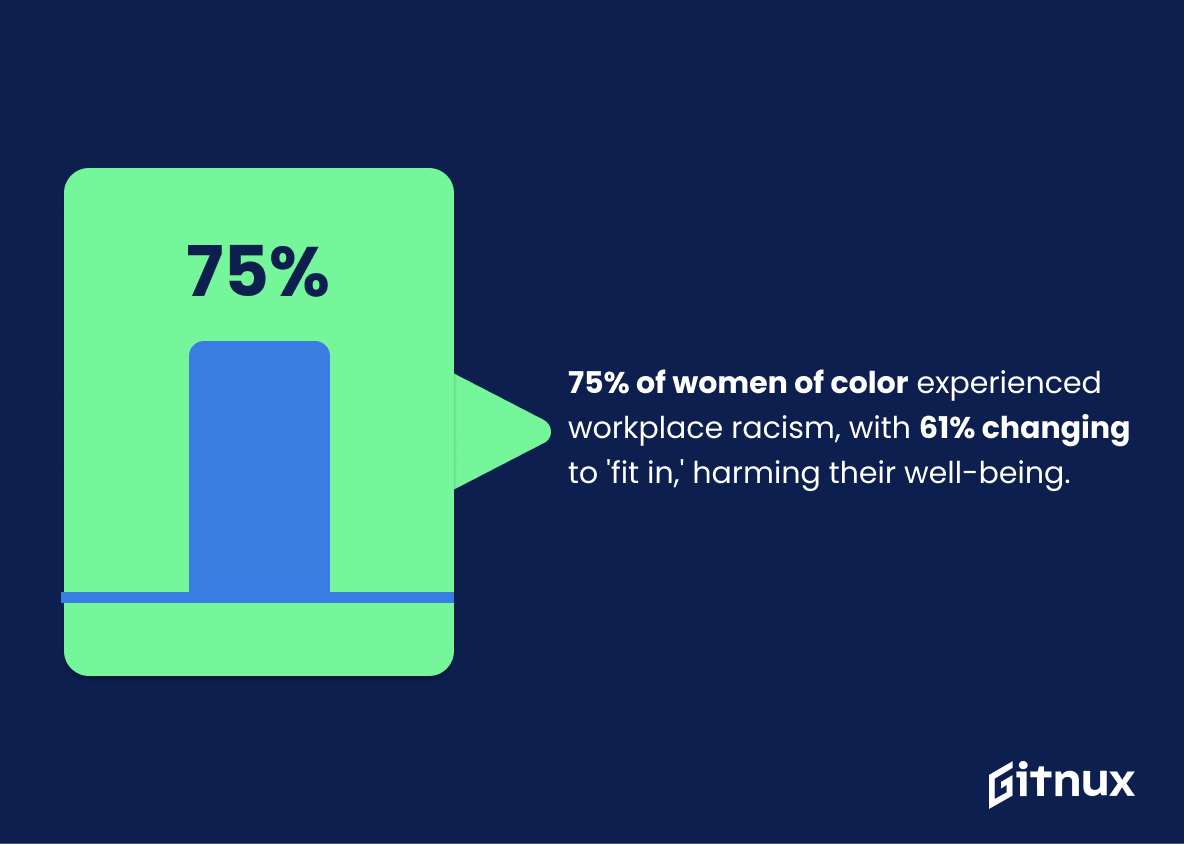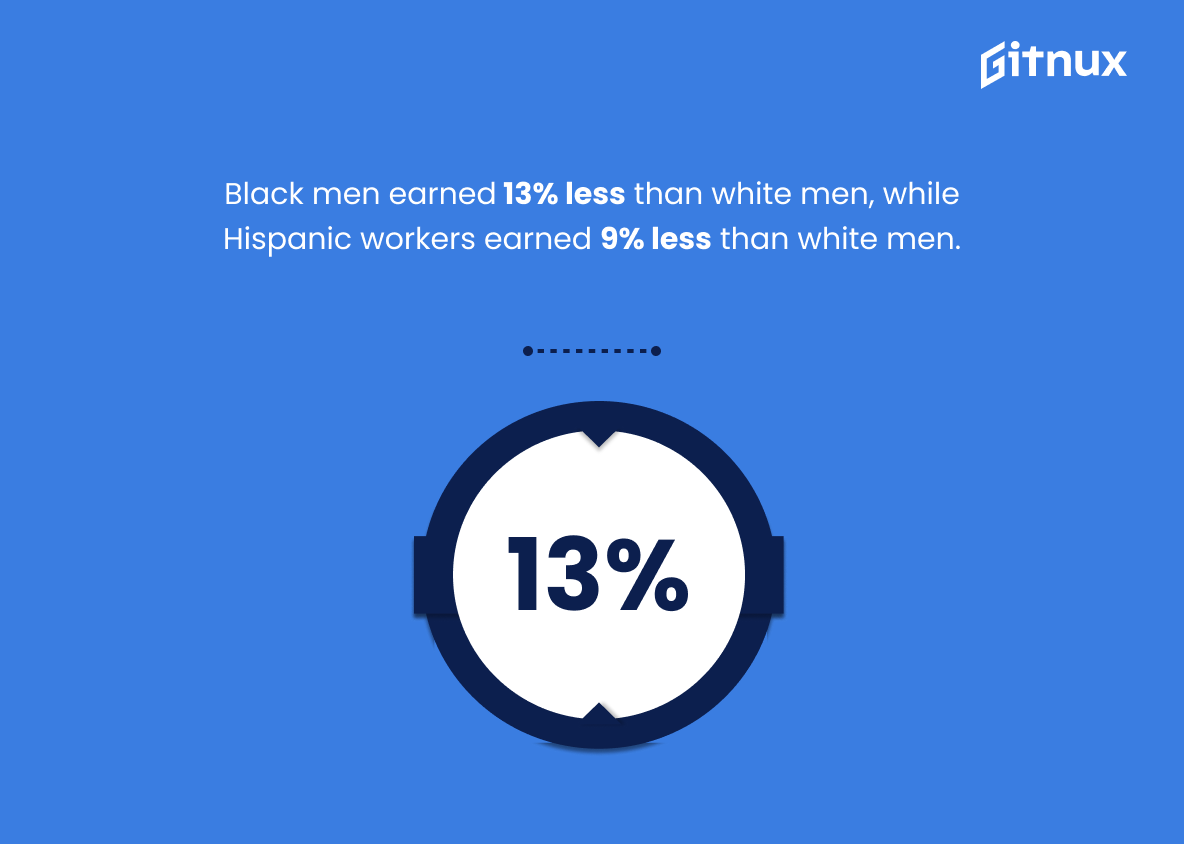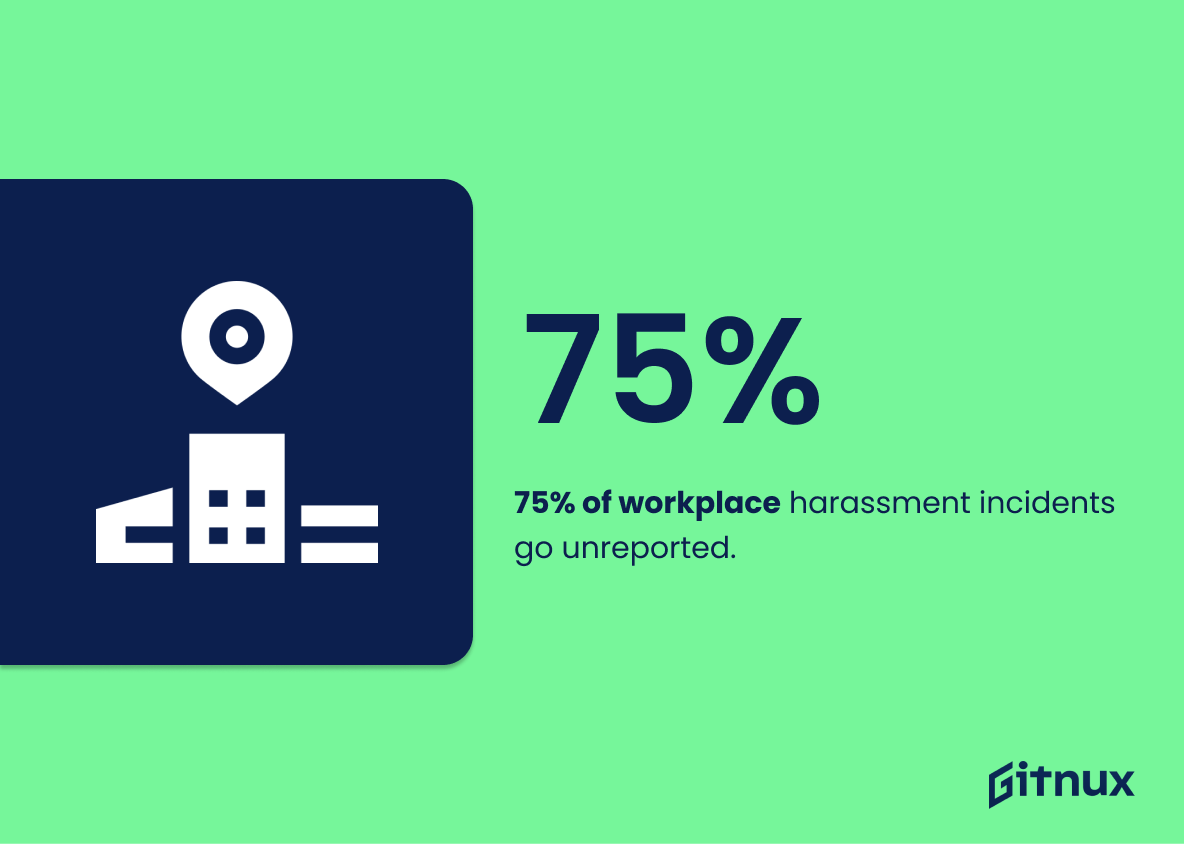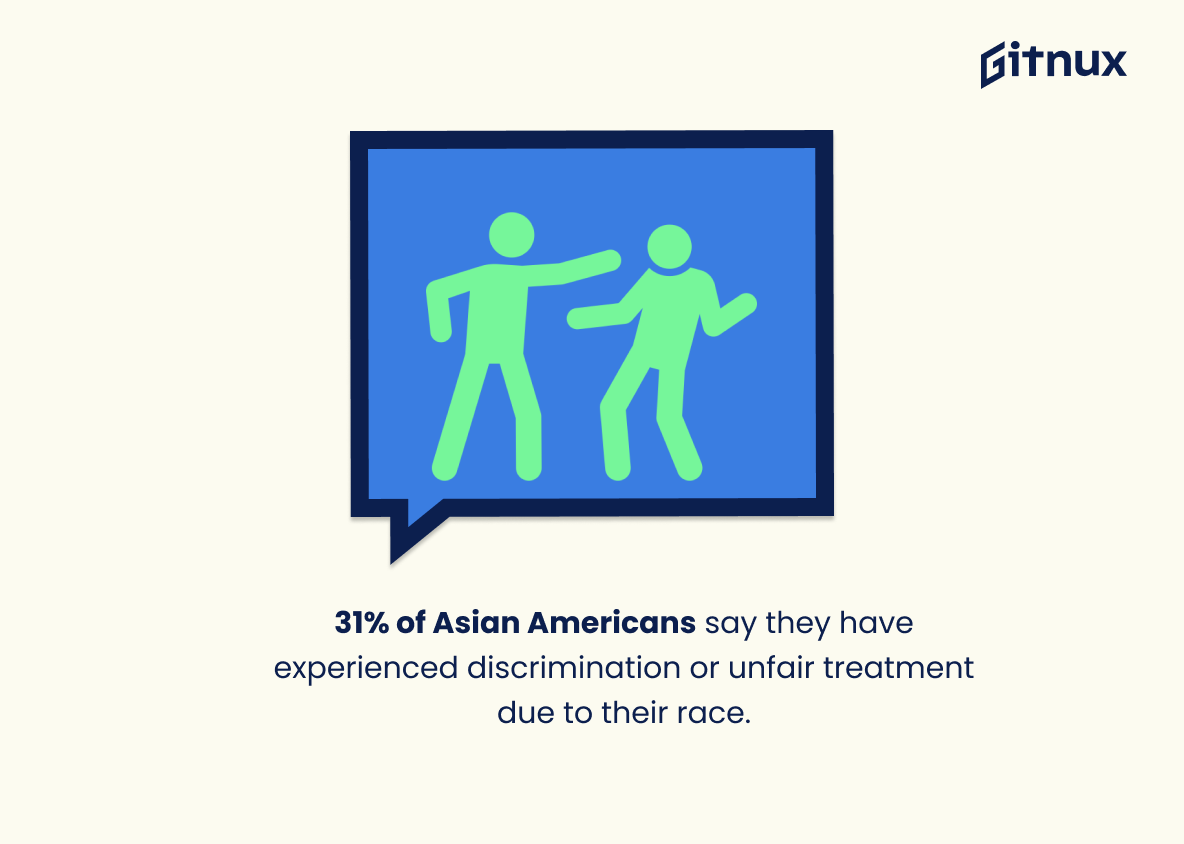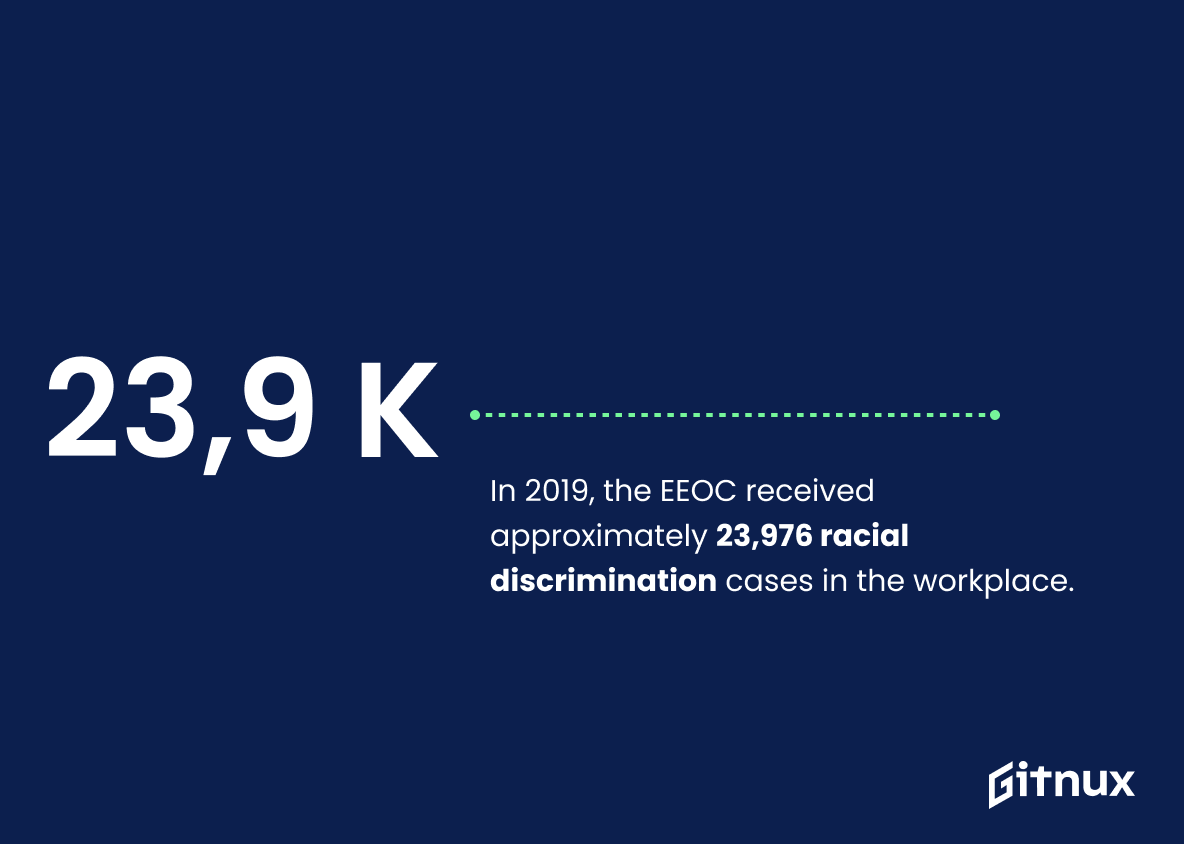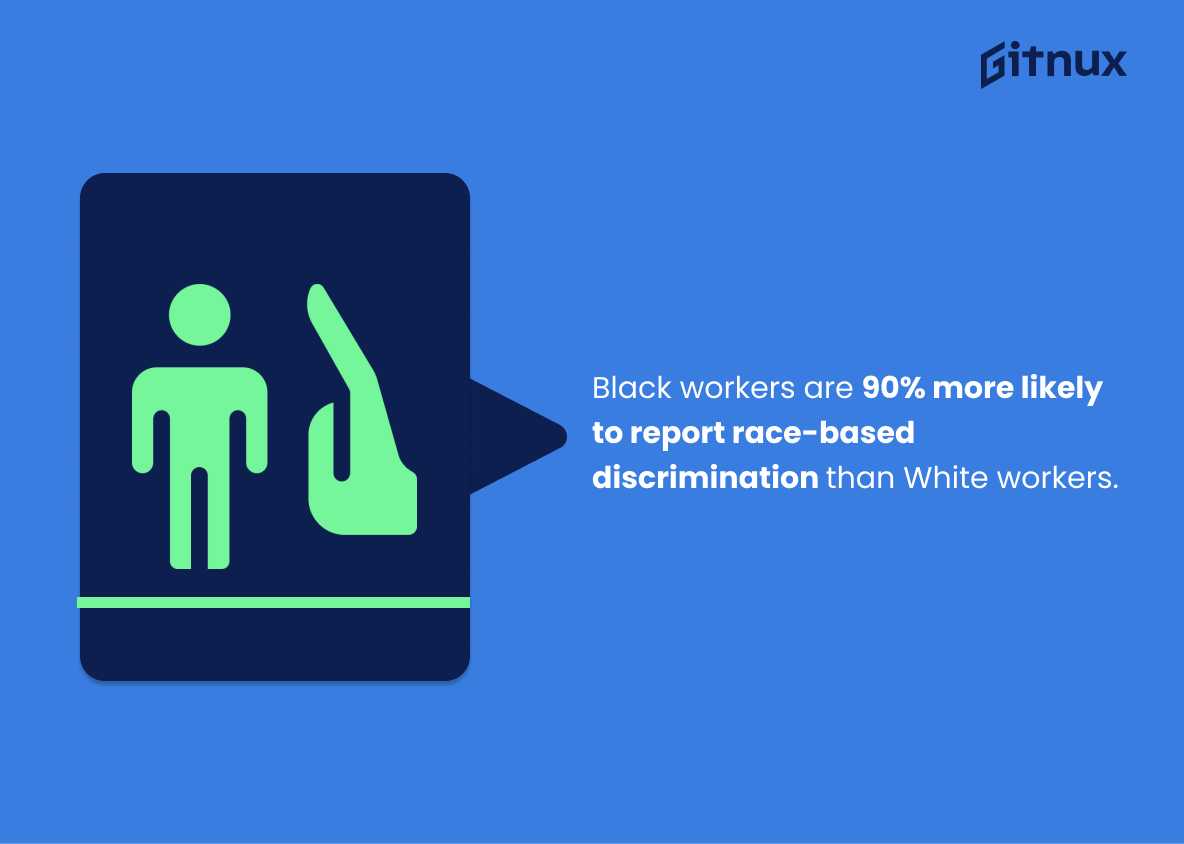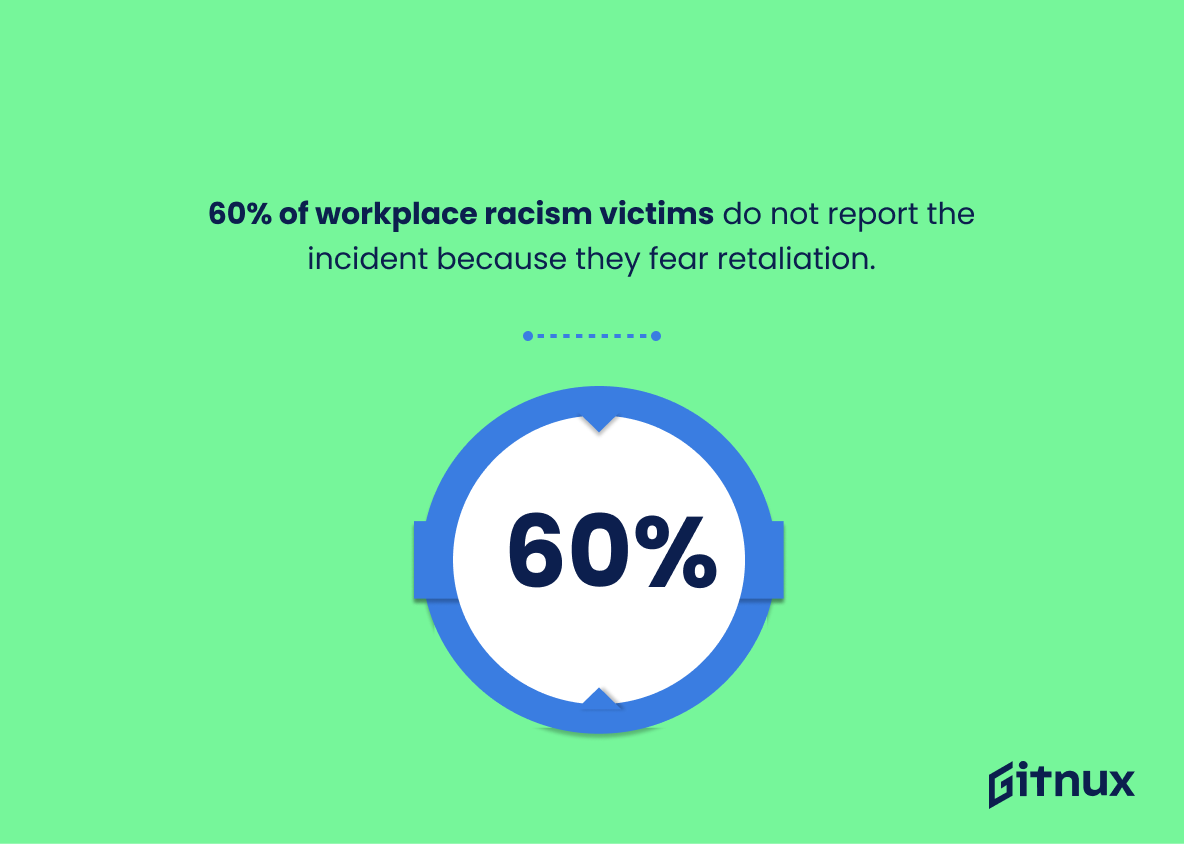Racism in the workplace is a serious issue that has been plaguing businesses for decades. Despite the progress that has been made in recent years, racism in the workplace is still a major problem.
In this blog post, we will look at some of the latest racism in the workplace statistics to get an idea of the scope of the issue. We will also explore some of the steps that employers can take to ensure that their workplaces are free from racism and discrimination.
Check out our latest Employment Discrimination Statistics
Racism in the Workplace: The Most Important Statistics
24% of Black and Hispanic employees in the US reported discrimination at work in the past year, compared to 15% of White employees.
75% of women of color have experienced racism at work, with 61% changing themselves to ‘fit-in’, leading to a negative impact on their well-being.
Racism in the Workplace: Statistics Overview
Over a third of people reported being bullied or subjected to insensitive questioning, 15% of women and 8% of men reported leaving their job due to racial discrimination, and 28% of those who experienced racism at work had to take a period of sick leave
It demonstrates the prevalence of racism in the workplace and the serious consequences it can have on employees. It is important to recognize the impact of racism in the workplace and take steps to prevent it.
27% of BME workers in the UK were subjected to everyday racism such as racist jokes, being made to feel uncomfortable, bullying, and racist remarks.
This highlights the need for employers to take action to ensure their workplaces are free of racism.
Ethnic minorities make up only 10% of the workforce and 6% of top management positions, despite making up 1 in 8 of the working age population.
This shows that there is a clear disparity between the number of ethnic minorities in the working age population and their representation in the workforce and in top management positions. There is a systemic issue of racism in the workplace that needs to be addressed.
24% of Black and Hispanic employees in the US reported discrimination at work in the past year, compared to 15% of White employees.
This shows that black and hispanic employees are more likely to experience discrimination in the workplace than white employees. Employers need to take proactive steps to address racism in the workplace and ensure that all employees are treated fairly and equally.
Racial discrimination has increased since the pandemic’s beginning, including discrimination targeting Asian and Asian American individuals. Asians reported over 1,100 cases of harassment and discrimination in 2020 alone.
It illustrates the extent to which racial discrimination is still present in the workplace and how it has been exacerbated by the pandemic. It highlights the need for employers to be more aware of and address discrimination in the workplace, and for members of minority groups to be vigilant about their rights and protection against discrimination.
Approximately 35% of Native Americans have personally experienced slurs in the workplace.
Native Americans are still subject to discrimination and racism in the workplace. It shows that even though the workplace may be legally protected from discrimination, there is still a prevalence of racism and prejudice against Native Americans. This statistic reinforces the need for employers to take action to ensure that all their employees are treated with respect and dignity in the workplace.
42% of US workers surveyed have experienced or witnessed racism in the workplace, with a higher percentage of Black workers (35%) than white workers (7%) believing racial or ethnic discrimination exists in their workplace.
This statistic highlights the disparity between the experiences of Black and white workers in the US. It also shows that racism is still prevalent in the workplace, and that more needs to be done to address this issue.
African Americans have had double the unemployment rate of Caucasians for most of the past 53 years, and referrals have been a major factor in job placement for the past 26 years.
African Americans have been at a disadvantage in the job market for a long time, and referrals have been a major factor in job placement, which could be a form of systemic racism.
75% of women of color have experienced racism at work, with 61% changing themselves to ‘fit-in’, leading to a negative impact on their well-being.
It highlights the prevalence of racism and the damaging effects it has on the mental health and career progression of women of color. It also indicates that racism is not only expressed through explicit acts, but also through more subtle forms of discrimination.
Black men earned 13% less than white men, while Hispanic workers earned 9% less than white men.
This highlights the systemic racism that exists in the workplace and the wage gap between white men and people of color. It shows that even when people of color have the same qualifications as white men, they are still not receiving the same wages. This wage gap is a form of systemic racism that needs to be addressed.
75% of workplace harassment incidents go unreported.
Many employees feel when it comes to reporting such incidents, and the need for employers to create a safe and supportive environment for their employees.
31% of Asian Americans say they have experienced discrimination or unfair treatment due to their race.
Asian Americans are still facing discrimination and unfair treatment due to their race, even in the 21st century. This statistic serves as a call to action for employers to take steps to ensure that all employees are treated fairly and equally, regardless of their race.
In 2019, the EEOC received approximately 23,976 racial discrimination cases in the workplace.
Racism is still a major issue in the workplace, and that it is something that needs to be addressed. It also serves as a call to action for employers to take steps to ensure that their workplaces are free from discrimination and harassment.
Black workers are 90% more likely to report race-based discrimination than White workers.
This is a powerful illustration of the systemic racism that continues to exist in many workplaces, and serves as a call to action for employers to take steps to address this issue.
60% of workplace racism victims do not report the incident because they fear retaliation.
Many victims of racism are too afraid to speak up, as they fear retribution from their employers. This statistic serves as a reminder that racism is still a pervasive issue in the workplace, and that more needs to be done to ensure that victims feel safe and supported in reporting incidents of racism.
41% of employees feel that racial bias is pervasive in workplace promotion decisions.
Despite efforts to create a more equitable workplace, racial bias is still a major issue that needs to be addressed. This statistic serves as a call to action for employers to take steps to ensure that all employees are treated fairly and equitably in promotion decisions.
In 2019, race-based discrimination cases made up 33% of all discrimination charges filed with the EEOC.
Race-based discrimination is still a major issue in the workplace, and that it is a problem that needs to be addressed. It is a call to action for employers to take steps to ensure that their workplaces are free from discrimination and that all employees are treated fairly and equally.
Only 57.8% of Asian Americans reported experiencing race-related discrimination, while 60.4% of Black workers and 58.9% of Hispanic workers did.
Asian Americans, Black workers, and Hispanic workers are all disproportionately affected by race-related discrimination, and that no group is immune to its effects. This statistic is a call to action for employers to take steps to ensure that all employees are treated fairly and equitably, regardless of their race or ethnicity.
21.6% of diversity and inclusion professionals surveyed believe that intentional bias against minorities is widespread in their companies.
Even those who are employed to promote diversity and inclusion are aware of the systemic bias against minorities in their companies. This statistic serves as a call to action for employers to take a closer look at their policies and practices to ensure that everyone is treated fairly and equitably.
Nearly 1 in 5 Black professionals feel that someone of their race or ethnicity is treated unfairly by their employer.
Even in a professional setting, people of color are still subject to unfair treatment. This statistic is a call to action for employers to take a stand against racism and create a workplace that is equitable and inclusive for all.
45% of Black employees say they experience higher levels of emotional tax compared to White employees (18%).
Black employees are disproportionately affected by the emotional burden of racism, with nearly three times the amount of Black employees reporting higher levels of emotional tax compared to White employees. This statistic is a powerful indicator of the need for employers to take action to address racism in the workplace.
37% of companies with racially diverse executive leadership teams have a higher likelihood of outperforming their industry peers.
Companies with racially diverse executive leadership teams have a greater chance of success than those without. This is an important statistic to consider when discussing racism in the workplace, as it highlights the potential benefits of creating an inclusive and equitable workplace. It also serves as a reminder that racism can have a negative impact on a company’s performance, and that taking steps to create a more diverse and inclusive workplace can have a positive effect on a company’s bottom line.
In 2020, only 1% of Fortune 500 CEOs were Black and 3.2% were of Asian descent.
Despite the progress made in recent years, there is still a long way to go in terms of achieving true equality in the workplace. This statistic is a powerful indicator of the need for further action to be taken in order to ensure that all individuals, regardless of race, have an equal opportunity to succeed in the workplace.
64% of workers who reported experiencing racial discrimination at work also reported sleep problems.
Racism not only has a direct impact on the mental and emotional wellbeing of workers, but also on their physical health. It highlights the need for employers to take proactive steps to address racism in the workplace, as it can have serious consequences for the health and wellbeing of their employees.
In a Gallup survey, 54% of Black Americans reported they had experienced racial discrimination at work.
Despite progress in many areas, racial discrimination is still a reality for many Black Americans. This statistic serves as a call to action for employers to take steps to ensure that their workplaces are free from racism and discrimination. It also serves as a reminder that racism in the workplace is an issue that needs to be addressed and that more needs to be done to ensure that everyone is treated fairly and equally.
About 1 in 3 Black women (32%) have experienced a racial microaggression in the workplace.
Black women are disproportionately affected by racial microaggressions, and that this is an issue that needs to be addressed. It serves as a call to action for employers to take steps to create a more equitable and inclusive workplace for all employees.
Organizations with diverse management teams report 19% higher innovation-driven revenue.
By having a diverse management team, organizations are able to tap into a wider range of perspectives and ideas, leading to increased innovation-driven revenue. This highlights the need for organizations to create an inclusive environment that encourages and celebrates diversity, as it can have a positive impact on their bottom line.
The wage gap between Black and White workers has widened by 14.6% from 1979 to 2019, with Black workers consistently earning about 75% to 84% of White workers’ wages.
Despite decades of progress, Black workers are still being paid significantly less than their White counterparts. This is a clear indication that racism is still a major issue in the workplace, and that more needs to be done to ensure that everyone is treated fairly and equitably.
Conclusion
Racism in the workplace is a serious issue that needs to be addressed. The statistics show that racism is still a major problem in the workplace, and that it affects people of all races and backgrounds. It is important to recognize the signs of racism in the workplace and to take steps to address it.
Companies should have policies in place to ensure that everyone is treated fairly and with respect. By taking a proactive approach to tackling racism in the workplace, employers can create a more inclusive and diverse workplace that is free from discrimination.
References
1 – http://hummedia.manchester.ac.uk/institutes/code/research/projects/racism-at-work/tuc-full-report.pdf
2 – https://www.tuc.org.uk/research-analysis/reports/still-rigged-racism-uk-labour-market
3 – https://www.gov.uk/government/publications/race-in-the-workplace-the-mcgregor-smith-review
4 – https://www.gov.uk/government/publications/ethnic-diversity-of-uk-boards-the-parker-review
5 – https://news.gallup.com/poll/328394/one-four-black-workers-report-discrimination-work.aspx
6 – https://about-content.glassdoor.com/en-us/diversity-inclusion-2019/
7 – https://www.americanbar.org/groups/crsj/publications/human_rights_magazine_home/the-state-of-healthcare-in-the-united-states/minority-womens-health/
8 – https://www.fawcettsociety.org.uk/broken-ladders
9 – https://www.lawsociety.org.uk/topics/research/race-for-inclusion-the-experiences-of-black-asian-and-minority-ethnic-solicitors
10 – https://www.shrm.org/resourcesandtools/hr-topics/compensation/pages/racial-wage-gaps-persistence-poses-challenge.aspx
11 – https://www.wenzelfenton.com/blog/2022/07/18/employment-discrimination-statistics-employees-need-to-know/
12 – https://news.gallup.com
13 – https://www.diversityinc.com
14 – https://www.qualtrics.com
15 – https://www.eeoc.gov
16 – https://www.rand.org
17 – https://www.catalyst.org
18 – https://www.natlawreview.com
19 – https://www.ncbi.nlm.nih.gov
20 – https://www.usatoday.com
21 – https://www.epi.org
22 – https://www.pwc.com
23 – https://www.pewresearch.org
24 – https://www.zippia.com
25 – https://www.bcg.com
26 – https://www.mckinsey.com
27 – https://www.businessinsider.com
28 – https://www.cnbc.com
